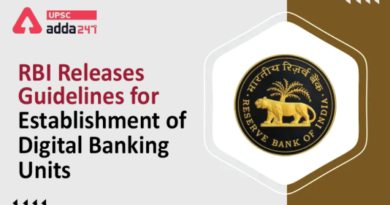Innovation in Digital Banking Enhancing Customer Experience
The way banks define digital today centers on browser-based banking, mobile apps and tablet apps. Eventually, digital delivery will extend beyond these channels and devices. “Digital will start to be redefined with emerging form factors like smart watches, smart TVs and also laptops that can run native software similar to the way phones and tablets run apps today. It is predicted that the use of online video for both sales and service will increase significantly and will see banks experiment more with other uses for video, such as video tellers in branches and using video banking to provide a human touch via remote touchpoints.
Taking a cue from the retail sector where the likes of Amazon, eBay have transformed digital customer experiences, banks now realize that if they fail to respond now, non-banking organizations will step in to own the customer experience.
Banks are also closely monitoring predictive modeling approach of online retailers to generate cash-flow projections for consumers. KeyBank’s latest money management app, myControl banking, can help customers predict what their daily bank balances will look like until their next paycheck.
Banks are now ramping up their websites with features such as personalized pages and intuitive navigation, to enhance customer experience. The traditional brick-and-mortar retail branches too are moulding more into advice centres, as customers are encouraged to use self-service terminals to do everything from transferring money to depositing cash or checks. Moreover, transaction data collected via these tools highlight cross-sales opportunities for these banks.
There are five guiding principles of a strategy for innovation in digital banking:
- Anticipation– Anticipate customer needs and guide them to the relevant product or offers quickly. For example, the landing page should be able to recognize if a particular user is a new visitor or returning customer before serving content.
- Insight– Leverage analytics, data mining and other technologies to understand customer preferences, thereby increasing the value of each customer interaction.
- Connected– Provide a seamless experience (one interaction leading to another without interruption) across channels and devices so customers will feel positive about their digital experience with their respective banks.
- Relevance– Deliver improved service to customers by developing digital applications that recognize contextual signals and engage customers accordingly. For instance, the bank’s locator application on a customer’s mobile device should recognize that he is abroad and provide information on the nearest ATM machines.
- Available— Deepen the relationship with customers by giving them access to virtual relationship managers and other digital tools and services across all channels and devices.
CaixaBank, Spain launchedHYPERLINK “http://press.lacaixa.es/caixabank/press-releases/caixabank-launches-a-new-comprehensive-bill-management-service__1775-c-18555__.html” Online and Multi-device Service for Bill Payment as response to customers asking for improvements in paying bills through their bank accounts. The service warns customers about incoming bills in case they don’t have enough money in their accounts. CaixaBank sought customers’ input in every step.
CaixaBank also developed two wearable technologies: an app for Google Glass that locates branch offices and converts currencies and Boisa Abierta, a native application for Sony’s Smartwatch that monitors the performance of stocks.
DenizBank’s (Turkey) fastPay Mobile Wallet enables users (including non-customers) to transfer money between mobile phones, withdraw cash from ATMs without a card and make purchases in stores.
FastPay Mobile Wallet with its Social Customer Care Program monitors 16 social media networks round the clock and responds to customers within an hour of them mentioning or posting a hashtag about the bank.
DenizBank also created Smart Cross Platforms “inter-Dashboard,” a platform using data mining to predict why customers are calling or visiting branches, helping to inform employees whether to prepare for routine transactions or sales pitches.
Tatra banka’s (Slovakia) Voice Biometrics reduces authentication and verification of customers calling into the contact center from 90 to 30 second. The service uses voice samples to identify customers, replacing payment cards and other forms of verification.
BAC Credomatic developed BAC Ticket, a mobile application to reduce wait times in branches. An electronic ticket replaces actually standing in line by notifying customers when their turn is near.
In the more distant future and depending on privacy concerns a strong link could eventually form between personal identification and payment technology. “Smart cards” (similar to EMV cards) which store both personal and financial information could appear in the more immediate future, where one card alone can hold important medical, identity, and payment information in a digital format. Payment identification technologies such as fingerprint scanners have been used in retail trial runs and may eventually be among the most secure methods for authorizing payments both online and offline.
The next wave of innovation in channel banking is one that brings together social media, mobile, and cloud technologies and is not limited to improving the existing channels in isolation. It’s more to do with the convergence of physical branches and virtual channels to create a seamless, more secure and cohesive customer experience.
Banks and financial services organizations need to renew their focus on the following to revolutionize and transform multi-channel banking.
- Pre Login Experience
- Frictionless Banking
- Digital Customer Service
- Post-login Experience
- Pre Login Experience
Banks are simplifying navigation and removing banker jargon across from their mobile and online banking interfaces to avoid missing out on potential business just because the process required too many clicks.
The ‘beauty imperative’ in financial services will begin to differentiate offerings. Apple Watch is a great example of how the tech sector is embracing fashion. Beauty is also important in designing financial channels and products.
Westpac – a bank in New Zealand – rolled out its “Cash Tank” feature for mobile bankers, where customer could view key information like account balances without needing to log in.
- Gamified Banking
Gamification is the application of computer game concepts to day-to-day software applications, apps and web sites. In terms of banking there are many experiments going on from apps that reward users with points when they explore new services, to ones that unlock in-app game levels when saving deposits are made. Banking gamification will generally be targeted at encouraging regular engagement – i.e. logging on more often. This will drive more use of digital – which drives down the use of branch-based banking (which costs more).
- Frictionless Banking
Frictionless banking is any point of a customer interaction where there is no inertia or delay when attempting to carry out transactions. For example, a long and cumbersome identification process, when a customer can be quickly identified using biometrics.
Frictionless banking delights the customer, by completing a transaction faster than they anticipated, with fewer steps, or by providing value added services
Further, the user interface should be easy to use and optimized for both mobile and online. This can be achieved through responsive Web design that provides an optimal viewing experience of content on a variety of devices. The mobile version of the Web site that is designed using this approach shares the same URL as its desktop counterpart while the content adjusts itself to the device’s screen size, thus delivering a consistent experience to the user across devices.
Picture the scene – You walk into a branch and are approached by a branch worker who already has your details loaded on their tablets so that they can immediately respond to your service request. You are identified by a facial recognition scan as you enter the branch, and as an existing premier customer, are singled out for exclusive treatment. Using this information, banks can offer customized services based on your needs and provide interactive, highly intuitive services.
- Digital Customer Service
Customers like to research products themselves. By gaining insights from their online activity, banks can understand a lot about their requirements, and then contact a customer through social media channels to suggest a product and then follow up with a web chat, with document capture via tablet, and final approval through the online bank.
Companies such as Amazon, Google and Apple operate as if they are reading their customers’ minds. They typically deliver experiences and offers by applying insights captured from the digital data that surrounds people, organizations, processes and products.
For a successful transition to digital banking, banks must formulate a strategy focused on six key areas with a provision for a seamless experience across all channels:
- Mobile and online capabilities
- Augmenting in- branch experience
- ATMs
- Leverage customer data
- Social media
- Personal touch
- Mobile and Online Capabilities
Your phone, tablet and computer all know where you are and have a pretty good idea what you are doing; e.g. at home watching TV (or Netflix), out running (or out shopping), or even out of the country. e-Commerce businesses are tapping in to this information to offer targeted, relevant services and offers to their customers.
Customers prefer apps over a mobile banking Web site and apps have higher engagement levels than browsers. Banks must ensure their apps are defect-free, engaging, smart and self-learning.
The banking industry is still well short on harnessing the power of mobile, beyond just a channel or technology. Mobile banking is leap-frogging online banking, as banks turn to a “mobile-first” strategy to provide more secure and an easier-to-use banking payment services. The challenge is to developing mobile channels for sales rather than merely a service tool.
An app for people buying a home will have home prices, interest rates, and advise from specialists. It’s all about selling loans, but selling with an experience that offers advisory services and not just low rates.”At the end of the day, what you offer on mobile may not be as important as how it is offered. Simplicity, clarity and responsive design will be important to the digital consumer moving forward.
M-Banking for Financial Inclusion
In rural India, where the mobile users far exceed the fixed line subscribers due to better mobile infrastructure has made the mobile banking much better in offering services.
M-Pesa (M for mobile, pesa is Swahili for money) is a mobile-phone based money transfer and micro financing service, launched in Kenya in 2007 by Safaricom and Vodacom. M-Pesa is a branchless banking service.M-Pesa allows users with a national ID card or passport to deposit, withdraw, to transfer money from one person to another, take out insurance policies, and collect payment from government agencies using PIN-secured SMS text messages to other users.
Focus on mobile security and authentication
Mobile identity authentication has become more important for financial institutions as consumers migrate away from online banking to smartphones and tablet. Consumers’ changing preferences, combined with emerging technology, has forced financial institutions to take a closer look at how they identify and authenticate mobile banking users when they log into their account.
- Augmenting In-Branch Experience
While there is considerable adoption of mobile and online banking, branches are not going to disappear any time soon as customers prefer branches for complex tasks such as taking out mortgages. While banks are shutting down redundant branches to save costs, banks such as Wells Fargo have launched a “neighborhood store” format – smaller and smarter branches, located in areas where customers usually shop. Banks can spruce up their branches and deploy the latest technology to improve the in-branch experience. Some banks have begun to provide free Wi-Fi, iPads and large touch screens at their branches for customers to learn more about the bank, and about using apps, payment services, etc. Banks can leverage newer technologies such as Apple’s iBeacon to send customized offers, product information, and branch information such as waiting times, the nearest ATM and branch staff information to customers’ smartphones when they are in the vicinity. Banks’ staff can be alerted when a valuable customer visits the branch, with information about what kind of products interests them. Requests for feedback can be sent on customers’ mobile phones as they leave a branch. This reduces customer waiting time and provides a personalized digital experience within the branch.
Tellers and other customer-facing employees at banks and call-center employees should have real-time access to the same customer data such as the customer’s interactions with various channels, latest customer activity, etc. so that they can more effectively serve customers. By understanding customers’ channel preferences and usage, banks can provide tailored services via those channels.
- ATM
Deposit taking ATMs are nothing particularly new. Many banks offer the convenience of dropping off checks and cash to your account after hours through these handy machines.
Now Genmega has developed machines that are capable of verifying your check and dispensing the cash accordingly. They developed a decision making engine that fairly accurately determines the overall validity of a check.
ATMs are being upgraded to behave more like mobile devices that support a range of self-service tasks. From remembering customer preferences such as language to allowing customers to view their account status, and offering customized products and services, ATMs can play a vital role in creating a more personalized experience for customers. Banks are dabbling with ATMs that allow cardless transactions, pre-staged withdrawals using smartphones and live video chat with a teller even after working hours and other features for the convenience of customers.
- Leverage Customer Data
Banks are sitting on enormous amounts of customer data – ranging from demographics to their current financial requirements, their clicks, searches, swipes, comments on social media, etc. – that can be mined to gain valuable business insights. However, most banks still operate in product silos with legacy systems. As a result, customer data resides on disparate systems that do not talk to each other. This gives rise to data inconsistencies and prevents banks from gaining a unified view of customers, resulting in poor customer management.
Every digital click, swipe, “like”, buy, comment and search produces a unique virtual identity – something called as Code Halo.
Code Halos refer to the digital data surrounding people, organizations, processes and devices such as buying behaviors, social media interactions, song preferences, searches, even customer geographic location. This coded information is being used by today’s leading businesses to derive meaning to develop an intimate knowledge of anyone they work with, whether customers, employees or partners.
- Social Media
While banks have been present on social media for some time, most have not gone beyond marketing and responding to customer issues. A majority of customers find their banks’ social media usage annoying, boring or unhelpful, but one-third of customers would use social media to complain. Only few customers use social media to interact with their banks, preferring traditional channels such as ATMs, branches and other channels.
- Personal Touch
No matter how digitized a bank may become, customers are always looking for a personal touch in the services so they are confident that they are dealing with real people and not just computers.
Old methods of interaction like frequently asked questions (FAQ) be replaced with live chats that let the customer communicate with the bank and feel empowered to make decisions and have a bond with the organization.
The bank must engage effectively with the customer ensuing him or her that their needs are being looked after and their opinions matter. This kind of communication flow creates a strong sense of independence and authority in mind of the customer who feels he or she is dictating the rules and the bank is only responding to their needs.
- Post Login Experience
Experience has shown that over 90 percent of customers use their bank website to check their account balance or carry out specific transactions, and then they log off. The average online banking interaction is at best functional and transactional. But there is a great opportunity to transform the post-login experience into a dialogue.
The ‘customer dialogue engine’ uses context, relevance and data to create a conversation between customers and banks. By monitoring customer transactions and behavior, the dialogue engine can suggest tools for financial planning and budgeting, act as a virtual advisor, offer peer comparison on selected products or services, and much more. In effect, the customer dialogue engine gives banks valuable insights about a customer’s financial life to enrich the experience.
Conclusion
Innovation in digital banking should aim at attracting, engaging and extending Customer Relationships.
Financial institutions need to establish a digital ecosystem around consumers’ data that will benefit the consumer’s wallet in a positive way, not only changing advertising, data analytics and e-commerce, but also allowing for a better understanding people’s intimate relationship with their money and improving it.
It is time for banks to rethink how they attract and retain customers. Creating relationships with digital customers is critical if banks want to differentiate their brands and boost loyalty.
By harnessing the power of digital channels, banks can move away from reactive, transaction-based customer relationships, towards a more personalized and proactive experience.
Customers today want more control over their finances. Banks should focus on providing sophisticated personal financial management (PFM) tools since this is important to young customers choosing a new bank.
Innovation today means redefining traditional banking with products and services that improve the customer experience, whether it’s a mobile app that enables customers to better comprehend and manage their bills; a hands-free payment system utilizing Bluetooth; a personal finance manager that automatically tracks all transactions, spending and cash flow across customer accounts; or a voice biometrics system that enables faster and more secure access to a bank’s contact center.
About the Author
Amit Joshi
Senior Manager
Punjab National Bank
Marketing Division, HO: New Delhi
Tel: 011-26183579 Mob: 9871121178




